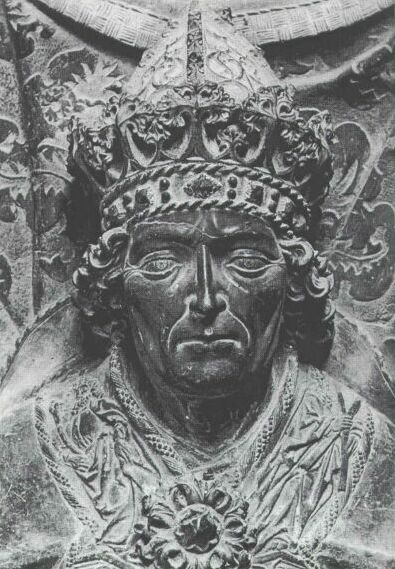You are using an out of date browser. It may not display this or other websites correctly.
You should upgrade or use an alternative browser.
You should upgrade or use an alternative browser.
Mass Extinctions, Evolutionary Leaps, and the Virus-Information Connection
- Thread starter Pierre
- Start date
Wandering Star
The Living Force
I am not a person to "store" data. I always try to understand and what I store is the concept.
So you are a perfect writer for me.
The concepts are perfectly understood and the reading is easy and fluid.
Thank you for the gift that is your book.
So you are a perfect writer for me.
The concepts are perfectly understood and the reading is easy and fluid.
Thank you for the gift that is your book.

-> Fracastoro. See Wiki.three centuries before Pasteur’s work - Girolamo Frastoro
-> cometsbetween comet and viruses?
The above fits. He was called the Bavarian.
I think Louis IV would be better both in English and in French. At least one will easily find it in google search with that name, where as Lewis IV does not bring much.
In English:

Louis IV, Holy Roman Emperor - Wikipedia
en.wikipedia.org
And in French:

Louis IV (empereur du Saint-Empire) — Wikipédia
fr.wikipedia.org
Fixed in the master file. Thanks!
Master file corrected. Thanks!
Done. Thanks!-> Actually their integration in the... or Actually integration of ERVs
Corrected in the master file. Thanks.
Chapter 19: Were 460 years added to the official chronology?
Before, continuing with the analysis of the Plague of Justinian, let’s have a look at the official chronology, because it has, serious repercussions on the timeline, in particular on the birth of Christianity.
One of the famous eruptions in history was the 79 AD eruption of Vesuvius, which buried Pompeii and Herculaneum overnight.
The most well-known eyewitness account of the eruption was not written by Pliny the Younger, as is generally believed, but much later in 1498, by Giovanni Giocondo[1], who claimed to have found Pliny’s original letters in Paris. Unfortunately, the original letters no longer exist.[2] Were what Giocondo found, and what he claimed to have found, different in any way? Notice also that some other works by Giocondo are marked by controversy.[3] [4] [5]
Spewing ash, Vesuvius spewed a deadly cloud of ash and gases at 1.5 million tons per second, and to a height of 33 km.[6] Pulverized pumice and lava fragments piled up to 20 meters[7] deep,[8] leaving the city of Pompeii buried beneath four million tons of volcanic material and debris[9].
The eruption released 100,000 times the thermal energy of the atomic bomb of Hiroshima[10]. The estimated VEI[11] was 5 on a scale of 6, making it one of the largest known eruptions in the past 2,000 years.
The only problem is, in spite of this magnitude, it didn’t leave any signature whatsoever in Greenland ice cores:
Spewing ash, Vesuvius spewed a deadly cloud of ash and gases at 1.5 million tons per second, and to a height of 33 km.[6] Pulverized pumice and lava fragments piled up to 20 meters[7] deep,[8] leaving the city of Pompeii buried beneath four million tons of volcanic material and debris[9].
The eruption released 100,000 times the thermal energy of the atomic bomb of Hiroshima[10]. The estimated VEI[11] was 5 on a scale of 6, making it one of the largest known eruptions in the past 2,000 years.
The only problem is, in spite of this magnitude, it didn’t leave any signature whatsoever in Greenland ice cores:
Major and trace element composition of the particles indicates that the tephra does not derive from Vesuvius but most likely originates from an unidentified eruption in the Aleutian arc. Using ash dispersal modelling, we find that only an eruption large enough to include stratospheric injection is likely to account for the sizeable (24–85 μm) ash particles observed in the Greenland ice at this time. Despite its likely explosivity, this event does not appear to have triggered significant climate perturbations, unlike some other large extra-tropical eruptions. In light of a recent re-evaluation of the Greenland ice-core chronologies, our findings further challenge the previous dating of this volcanic event to 79 CE.[12]
In Antarctica, it’s the same story; no noticeable deposits. “The event” didn’t trigger a noticeable temperature drop either:
In the other hand, the eruption of 536 AD is reported by Procopius (way more ancient and reliable than Giocondo):
But on the summit of Vesuvius and at about the centre of it appears a cavern of such depth that one would judge that it extends all the way to the bottom of the mountain. And it is possible to see fire there, if one should dare to peer over the edge, and although the flames as a rule merely twist and turn upon one another, occasioning no trouble to the inhabitants of that region, yet, when the mountain gives forth a rumbling sound which resembles bellowing, it generally sends up not long afterward a great quantity of ashes. And if anyone travelling on the road is caught by this terrible shower, he cannot possibly survive, and if it falls upon houses, they too fall under the weight of the great quantity of ashes. But whenever it so happens that a strong wind comes on, the ashes rise to a great height, so that they are no longer visible to the eye, and are borne wherever the wind which drives them goes, falling on lands exceedingly far away.[13]
Notice however how Procopius doesn’t mention an eruption of Vesuvius per se, but a rumbling. What the point of reporting of more “rumbling”. Does Procopius protest too much? It seems so because the same Procopius, in The Gothic Wars mentions explicitly an explosive eruption of Vesuvius in 536 AD:
Explosive eruption [of Vesuvius], darkening in Mesopotamia lasted all the winter of this year.[14]
The eruption of 536 AD is not only backed up by historical observations, but left very distinct marks in both Antarctica and Greenland ice-cores and in temperature reconstructions (as shown in the graph by Sigl et al.) . For some reason, it is the only eruption with no associated VEI.
Notice also, all the other alleged eruptions – in 172 AD, 203 AD, 222 AD, 379 AD, 472 AD and 512 AD – despite reaching, for several them, a VEI of 4 and 5 – didn’t leave any trace in Greenland and Antarctica ice cores and temperature reconstructions.
Could it be that just one eruption of Vesuvius (that of 536 AD, with its historical observations and confirmed ice cores) actually happened, while the other eruption (of 79 AD) didn’t happen?
That’s substantially what Mike Baillie proposes in his paper “Volcanoes, ice cores and tree rings; one story or two?”[15] In it he suggests that if no volcanic ash is to be found in ice cores corresponding to 79 AD (as shown by Plunkett et al.) then the real eruption – conventionally attributed to 79 AD – actually occurred in 536 AD.
If one factors in the re-dating of the European ice core chronology by seven years prior to the 7th century AD[16] we end up with 464 added years.
If one eruption of Vesuvius became two, 464 years apart, could those 464 years have been added to the official timeline?
Could it be that just one eruption of Vesuvius (that of 536 AD, with its historical observations and confirmed ice cores) actually happened, while the other eruption (of 79 AD) didn’t happen?
That’s substantially what Mike Baillie proposes in his paper “Volcanoes, ice cores and tree rings; one story or two?”[15] In it he suggests that if no volcanic ash is to be found in ice cores corresponding to 79 AD (as shown by Plunkett et al.) then the real eruption – conventionally attributed to 79 AD – actually occurred in 536 AD.
If one factors in the re-dating of the European ice core chronology by seven years prior to the 7th century AD[16] we end up with 464 added years.
If one eruption of Vesuvius became two, 464 years apart, could those 464 years have been added to the official timeline?
[1] Wikipedia contributors (2021) “Giovanni Giocondo” Wikipedia
[2] Tom Higgins (2011) “Pliny Correspondence With Trajan John Bartrom” Scribd
[3] Kaiser, R. (2017) “Caesar's Rhine Bridge and Its Feasibility in Giovanni Giocondo's Expositio pontis (1513)”. In Knowledge, Text and Practice in Ancient Technical Writing (pp. 68-92) Cambridge University Press
[4] Stenhouse, William (2003) “Georg Fabricius and Inscriptions as a Source of Law” Renaissance Studies 17, no. 1 96–107
[5] De Raedt N. (2016) “Architecture” In Encyclopedia of Renaissance Philosophy, Springer
[6] Time editors (1956) “Man of Pompeii" Time
[7] 70 ft
[8] Sigurðsson, Haraldur et al. (1982) "The Eruption of Vesuvius in A. D. 79: Reconstruction from Historical and Volcanological Evidence" American Journal of Archaeology 86 (1)
[9] Noreen G. (2021) “A World Buried in the Eruption” Eruption Vesuvius
[10] Ibid
[11] Volcanic Explosivity Index
[12] Plunkett, G. et al. (2021) “No evidence for tephra in Greenland from the historic eruption of Vesuvius in 79 CE: Implications for geochronology and paleoclimatology” Climate of the Past
[13] Procopius. “History of the Wars”, Book V and VI. Series: Procopius. Vol. 3
[14] Procopius (1919) “The Gothic Wars” Loeb Classical Library, book II (chap IV), book IV (cap XXXV)
[15] Baillie, M. (2010) “Volcanoes, ice-cores and tree-rings: One story or two?” Antiquity, 84(323), 202-215
[16] Baillie, M. (2008) “Proposed re-dating of the European ice core chronology by seven years prior to the 7th century AD” Geophysical Research Letters 35. 10.1029
What if there was no ice in Greenland at the time and much less in the Antarctic? Could the rapid build up of snow have happened only a decade or so before the 536 AD event and subsequently been further buried by the aftermath of such an eruption?Could it be that just one eruption of Vesuvius (that of 536 AD, with its historical observations and confirmed ice cores) actually happened, while the other eruption (of 79 AD) didn’t happen?
Today we have dozens of volcanoes erupting everywhere and snow and ice in the deserts and yet to those not paying attention it seems insignificant relative to the big picture of where we are headed even in the next ten years. Just thinking out loud, because the 800's look like they contain a lot more sulphur evidence which I imagine suggests a very long aftermath which may have included other cosmic events, plagues, serious depopulation, wars for survival, etc.
It may be possible to have inserted many years during that period and later, when few survived to claim otherwise. FWIW
Love this thread.
But there was ice at the time Greenland and Antarctica.What if there was no ice in Greenland at the time and much less in the Antarctic?
There are no trace of 79 AD eruption in ice-cores (sulfate), there are no traces in temperature reconstruction, there is no trace of thepra, there is no trace in dendrochronology records. Conversely, all these markers are present at 540 AD.Could the rapid build up of snow have happened only a decade or so before the 536 AD event and subsequently been further buried by the aftermath of such an eruption?
Last edited:
That is another strange thing to me that so many events have no trace so I'm asking, if you know, where/when do the original claims/recordings come from ?Notice also, all the other alleged eruptions – in 172 AD, 203 AD, 222 AD, 379 AD, 472 AD and 512 AD – despite reaching, for several them, a VEI of 4 and 5 – didn’t leave any trace in Greenland and Antarctica ice cores and temperature reconstructions.
That too, seems odd because it was supposed to be the Roman warm period.But there was ice at the time Greenland and Antarctica.



